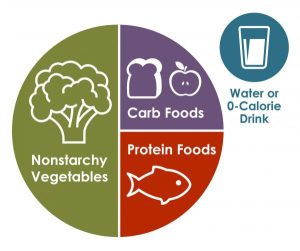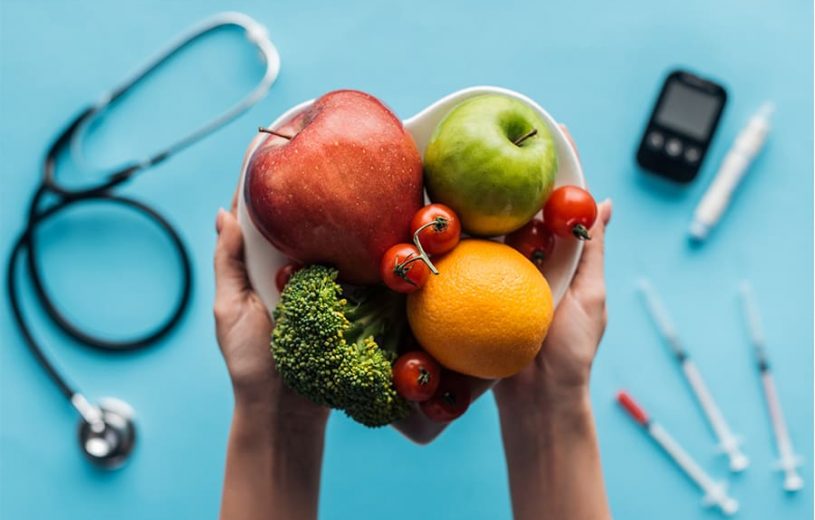Diabetes is a chronic health condition that affects how your body turns the food you consume into energy.
Currently, there are 37.3 million Americans living with diabetes. Everyone needs to know the risks and ways that they can manage, prevent, or delay diabetes.
To learn more specifics about diabetes, you can visit Tomah Health’s Diabetes Wellness Article. By managing your diabetes, you do not have to worry about stopping you and your family from living a healthy life.
By being active, staying healthy, and eating a healthy diet, you can lower your risks of diabetes and eliminate additional health conditions. All three keys are equally essential. Ensuring you consume healthy foods can be a significant first step in making a difference in your overall health. Along with creating a meal plan, you can monitor when, what, and how much to eat. By doing this, you can get your body’s nutrients while keeping your blood sugar in range. The best meal plans are created with your goals, tastes, lifestyle, and medications in mind. You can create your own food guide and meal plan on your own, with friends, or by consulting with a licensed dietician and doctor. By creating a personalized plan, you can make choices that are right for YOU!
Nutrition Goal
The goal is to create a food guide or meal plan where you consume foods rich in minerals, vitamins, antioxidants, and fiber. Doing this can contribute to lowering your risk of prediabetes and prevent additional health complications. Further, the meal plan can help you track how many carbs you eat. Setting a limit for each meal helps keep blood sugar levels in your targeted range. When deciding foods and beverages, the rule of thumb is generally the same as healthy eating for anyone – low in saturated fat, with meals based on lean protein, non-starchy vegetables, whole grains, healthy fats, and fruit.

-
- A few foods you can incorporate into your meal plan include:
-
-
- Tomatoes are rich in Vitamin C and Vitamin E. They can be incorporated into almost any meal as part of your main entrée, a side, or a light snack.
- Berries contain many antioxidants, vitamins, and fiber. In addition, berries can be a great option to satisfy your sweet tooth, and they also provide the added benefit of vitamin C, vitamin K, manganese, and potassium.
- Sweet Potatoes contain beneficial values of Vitamin A, Vitamin C, and potassium. If you crave something sweet, add a cinnamon on top!
- Spinach, collards, and kale are dark green leafy vegetables packed with vitamins and minerals such as vitamins A, C, E, and K, iron, calcium, and potassium. These powerhouse foods are low in calories and carbohydrates, too. Try adding dark, leafy vegetables to salads, soups, and stews.
-
-
- A few foods you can incorporate into your meal plan include:
Furthermore, receiving a Diabetes diagnosis is scary—but know that eating a healthy diet can significantly impact your journey.
Consult with your provider or a licensed dietician to discuss the steps to make healthier choices to manage, prevent, or delay prediabetes or Type 2 Diabetes.
Sources:
“2. Classification and Diagnosis of Diabetes: Standards of Medical Care in Diabetes—2020.” American Diabetes Association, 16 Dec. 2019, diabetesjournals.org/care/article/43/Supplement_1/S14/30640/2-Classification-and-Diagnosis-of-Diabetes. “Diabetes Self-management Education and Support (DSMES).” Centers for Disease Control and Prevention, 13 July 2022, www.cdc.gov/diabetes/managing/education.html. Diabetes Symptoms, Causes, and Treatment | ADA. diabetes.org/diabetes. Accessed 4 Nov. 2022. November Fast Facts: National Diabetes Month. www.wha.org/vv-11-03-2022/12. Accessed 4 Nov. 2022. Tomah Health. “Are You at Risk for Type 2 Diabetes?” Tomah Health, 12 May 2022, www.tomahhealth.org/wellness/are-you-at-risk-for-type-2-diabetes.
